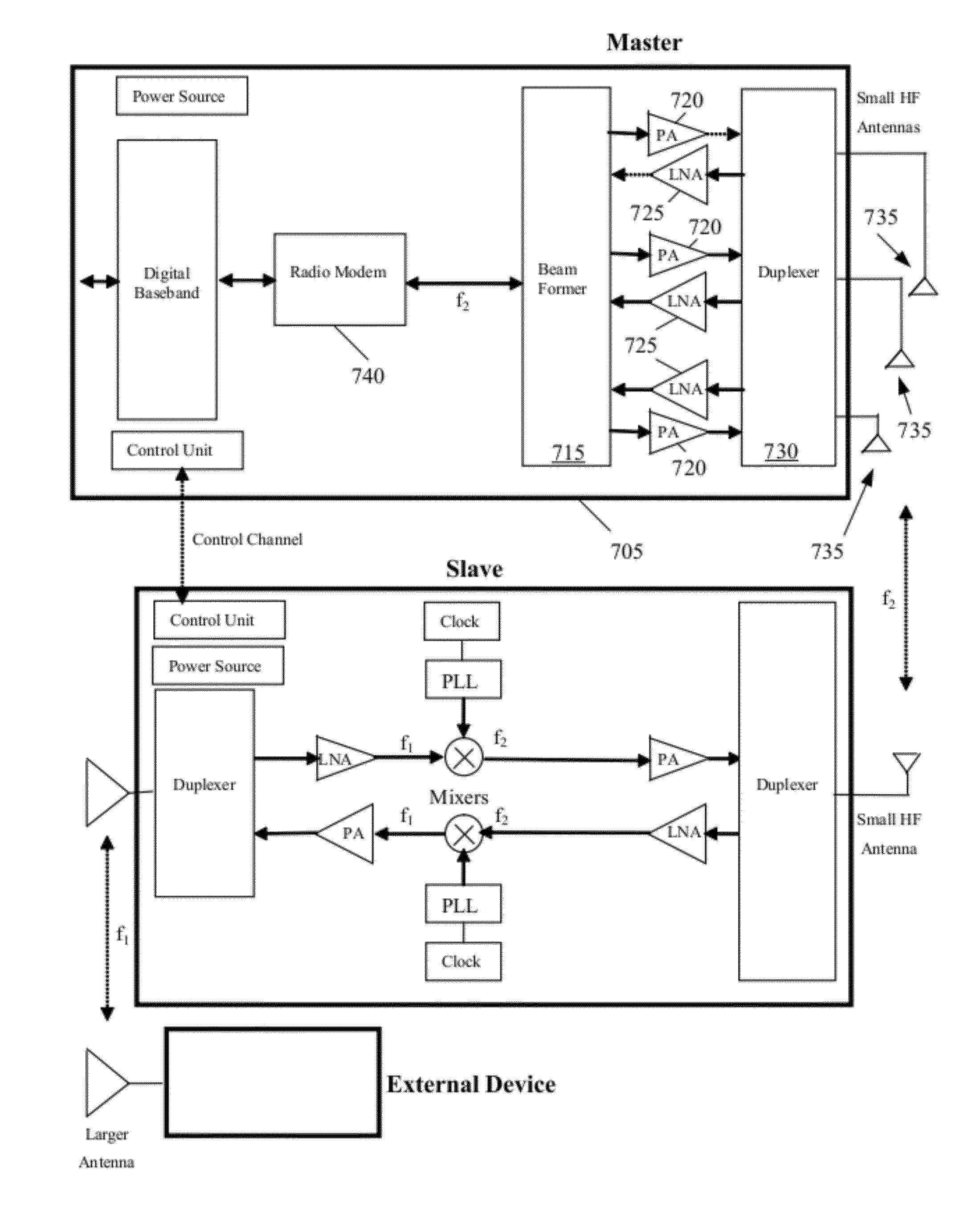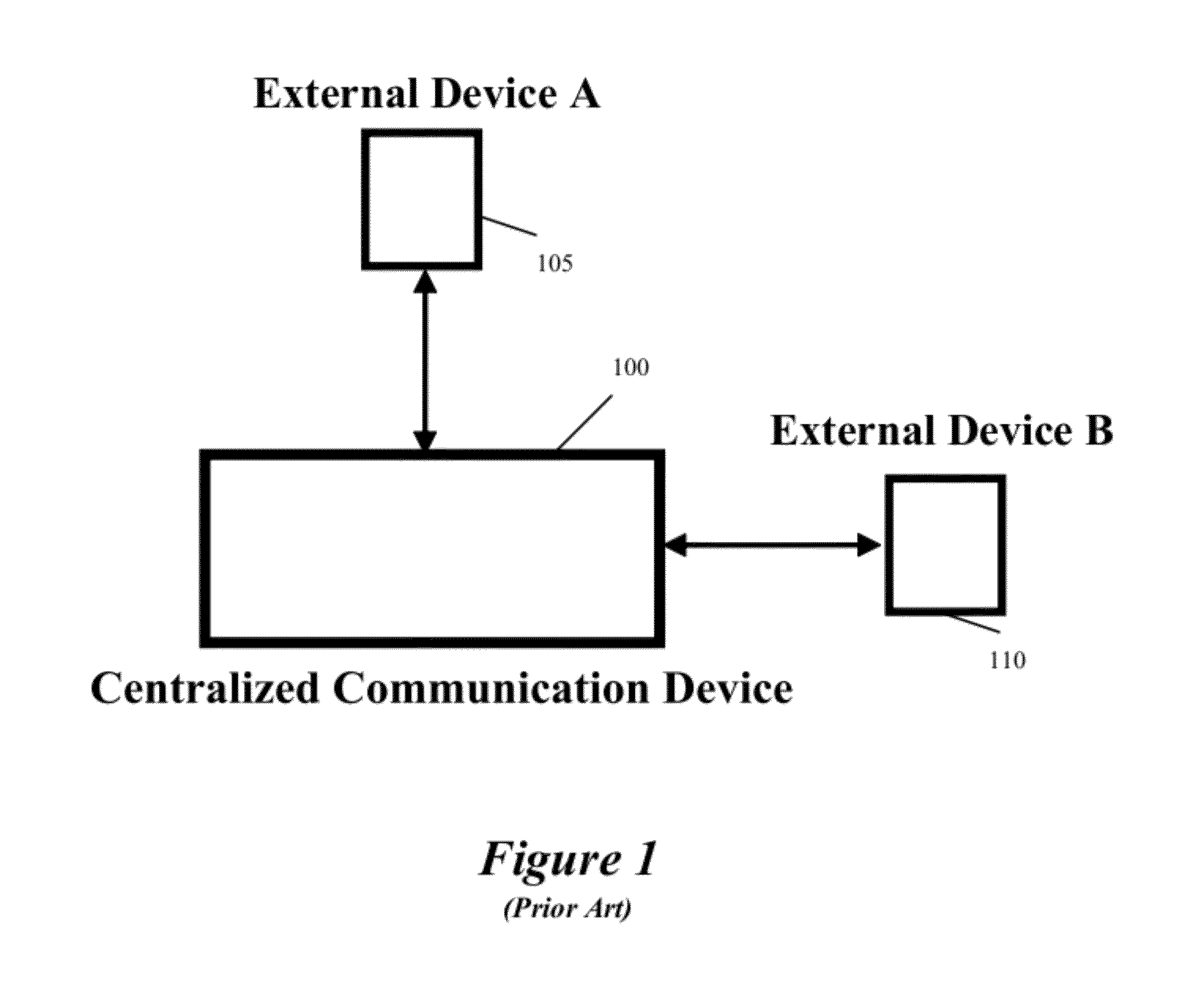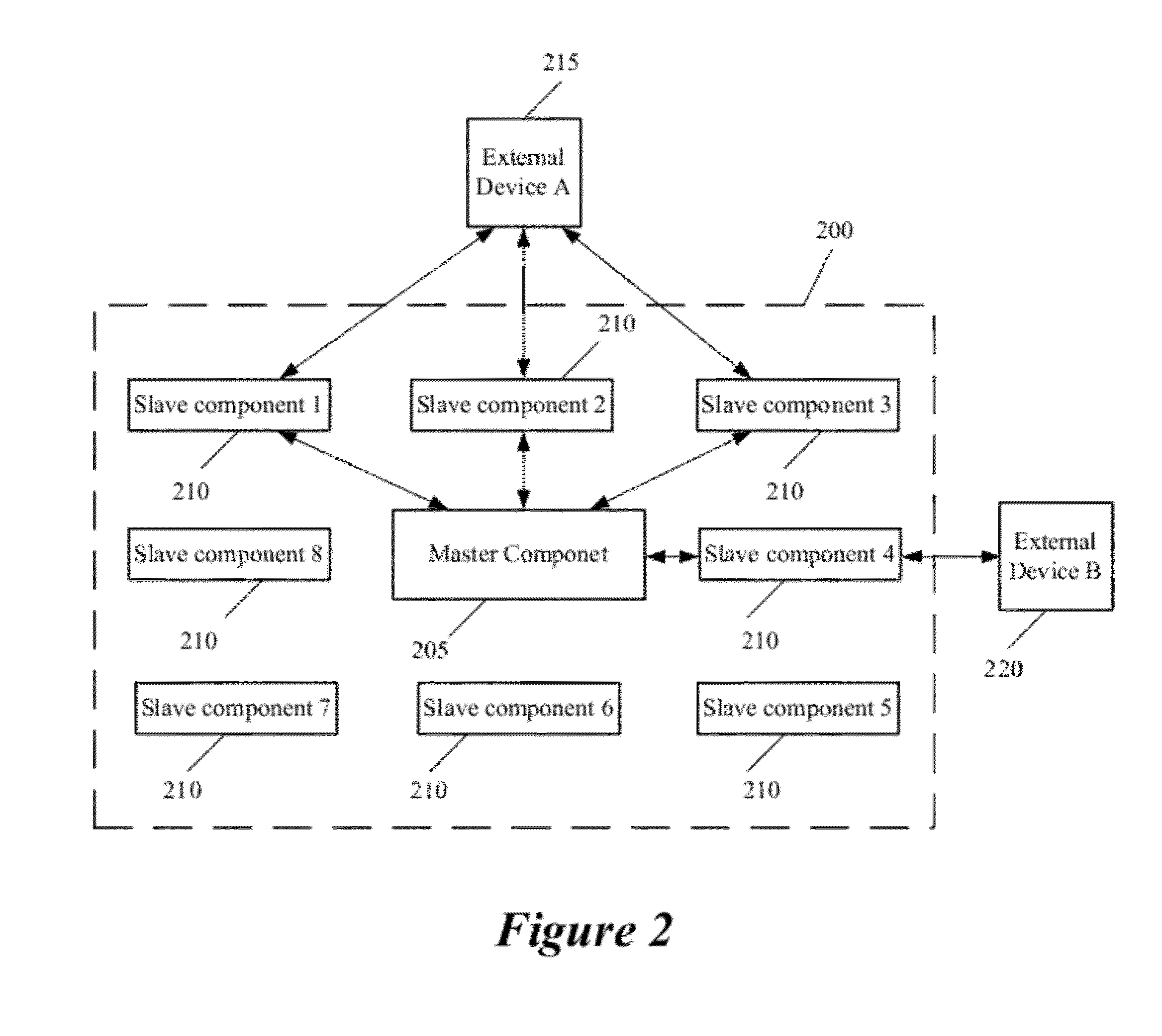Method and System for Distributed Communication
a distributed communication and communication method technology, applied in the field of methods and systems for distributed communication, can solve the problems of reducing the sensitivity and performance of the system, limiting the optimal positioning and orientation, and no flexibility in changing the position, so as to improve the performance and improve the performan
- Summary
- Abstract
- Description
- Claims
- Application Information
AI Technical Summary
Benefits of technology
Problems solved by technology
Method used
Image
Examples
Embodiment Construction
[0033]In the following detailed description of the invention, numerous details, examples, and embodiments of the invention are set forth and described. However, it will be clear and apparent to one skilled in the art that the invention is not limited to the embodiments set forth and that the invention may be practiced without some of the specific details and examples discussed.
[0034]A decentralized communication device is provided that facilitates optimal positioning and orientation of one or more antennas for communicating with external devices. The decentralized communication device includes one or more master components and one or more slave components. The master and the slave components are physically separate and communicate wirelessly.
[0035]The slave includes the antennas for communicating with external devices as well as a front-end for sending signals to and receiving signals from the antennas. In some embodiments, the front-end includes a time or frequency duplexer, one or...
PUM
 Login to View More
Login to View More Abstract
Description
Claims
Application Information
 Login to View More
Login to View More - R&D
- Intellectual Property
- Life Sciences
- Materials
- Tech Scout
- Unparalleled Data Quality
- Higher Quality Content
- 60% Fewer Hallucinations
Browse by: Latest US Patents, China's latest patents, Technical Efficacy Thesaurus, Application Domain, Technology Topic, Popular Technical Reports.
© 2025 PatSnap. All rights reserved.Legal|Privacy policy|Modern Slavery Act Transparency Statement|Sitemap|About US| Contact US: help@patsnap.com



